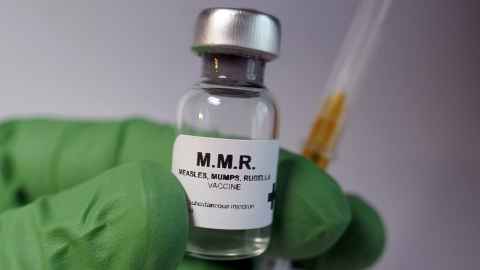Why are vaccinated people getting measles?
5 September 2019
Opinion: Dr Helen Petousis-Harris explains why some of the measles cases in the current outbreak occur in people who are fully vaccinated.

The MMR vaccine is not 100 percent protective. One dose is around 92 percent protective and two doses around 98 percent protective. Assuming the vaccine is potent and the patients are relatively healthy, most measles cases occur in the unvaccinated with a few in the vaccinated.
A common pitfall is to look at the number of cases by vaccine status. For example, when I looked today at the recent measles report it shows that among 10-19 year olds, 17 cases are fully vaccinated and 96 are not vaccinated. A natural inclination is to conclude "OMG! The vaccine is only 85 percent protective!" The problem with doing this is that most people are vaccinated; you need the denominator.
A common pitfall is to look at the number of cases by vaccine status... The problem with doing this is that most people are vaccinated; you need the denominator.
The correct way to do it is to consider the attack rate among the vaccinated and the attack rate in the unvaccinated. The attack rate is the proportion of cases in the population at risk divided by the number of persons in that population. Of course, I have totally over-simplified things here - if I were going to do this in a robust manner it would be through a cohort study using data-linkage and would adjust for confounders, a bit like we did for our gonorrhea cohort study. Also, the formula for effectiveness uses odds ratios, but I only wish to illustrate a point here, so please bear with my over simplistic explanation!
Calculating vaccine efficacy
The formula for vaccine efficacy is (ARU-ARV)/ARU x 100 percent. ARU means attack rate in unvaccinated and ARV means attack rate in vaccinated.
We need some additional information for our calculation other than the vaccine status of the cases. We need to know how many of our population are vaccinated and how many are unvaccinated. For this 10-19 year old age group, based of the number of individuals born in the years 2000-2009, I get around 480,000 vaccinated and around 108,000 unvaccinated (remember this is crude!).
Plugging this information into the basic formula, I get around 96 percent effectiveness. There are many more unknowns for this age group, for example for 75 cases the vaccine status was unknown. However, if I perform the same exercise for the 5-9 year olds (where vaccine status is known for all but 4 cases), I get 97 percent effectiveness.
Another exercise is to imagine that 98 in every 100 people at the raging party in a downstairs nightclub are vaccinated and measles is invited. The two unvaccinated party goers get measles. Also, two or three of the fully vaccinated people get measles. OMG! half the cases were vaccinated.
Hopefully you can see that if one wants to avoid measles it is much better to be in the vaccinated group!
Dr Helen Petousis-Harris is a vaccinologist and senior lecturer in the University of Auckland’s Faculty of Medical and Health Sciences.
This article reflects the opinion of the author and not necessarily the views of the University of Auckland.
Used with permission from Sciblogs 'Why are vaccinated people getting measles?' published on 4 September 2019.
Media queries
Nicola Shepheard | Media Adviser
Tel: +64 9 923 1515
Mob: +64 27 537 1919
Email: n.shepheard@auckland.ac.nz